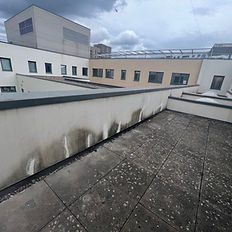PRIMARY ASPECT UK

Monocouche Render Reconditioning
We can totally recondition the cracked, pale or hollow render to a long-lasting clean aspect!
Service Description
Monocouche renders first arrived on the scene in the UK during the 1980s and 90s, and they quickly became a popular choice over traditional rendering options. However, these were early days and the materials and methods were still, in a sense, experimental. Since then, contractors and manufacturers alike have had ample time to explore any issues. And this is what has been discovered so far: Hairline Cracks The problem is caused by movement in the building structure, which is a fact of life: all buildings shift to some extent. The severity of the cracking problem depends on how much movement there is. Monocouche render is pretty flexible, so it is more resistant to cracking than sand and cement render. Even so, it is itself a cement render and can still eventually crack over the years if the external wall surface moves. What's The Solution? If a wall is prone to movement, contractors will embed a fibreglass mesh in the first pass that strengthens and supports the render. This should stop hairline cracks from appearing in the future. Also, to prevent cracking soon after the render is applied, it should not dry too quickly. A professional render expert will know to avoid attempting the job in direct sunlight or high winds and will start work early in the morning if the project is to be completed during the warmer months. It's important to note that monocouche rendering isn't suitable for painted substrates. Any paint has to be removed before the project goes ahead. It Isn't Hydrophobic You may have noticed that we get a lot of rain in the UK? This means that you need your render to be as waterproof as possible! Unfortunately, monocouche render isn't completely hydrophobic. That is, it doesn't usually repel water as silicone render does. However, it is still considered waterproof and weatherproof to a greater extent. This type of render is microporous, which is excellent for balancing thermal pressure as the wall surface heats up and cools down. The trouble is that this microporosity allows moisture in, which can lead to algae growth that can cause discolouration. related article: bossed render What's The Solution? This green staining is unsightly and is a pain to clean off if left too long. The best way to avoid it is to apply a siloxane-based sealer over the render. Otherwise, you'll need to be prepared to clean it regularly (see the section on maintenance below) or consider other types of render. Discuss the options available with your chose
















Contact Details
07860133788
patrick@primaryaspect.co.uk
Wilder Cl, Ruislip HA4, UK